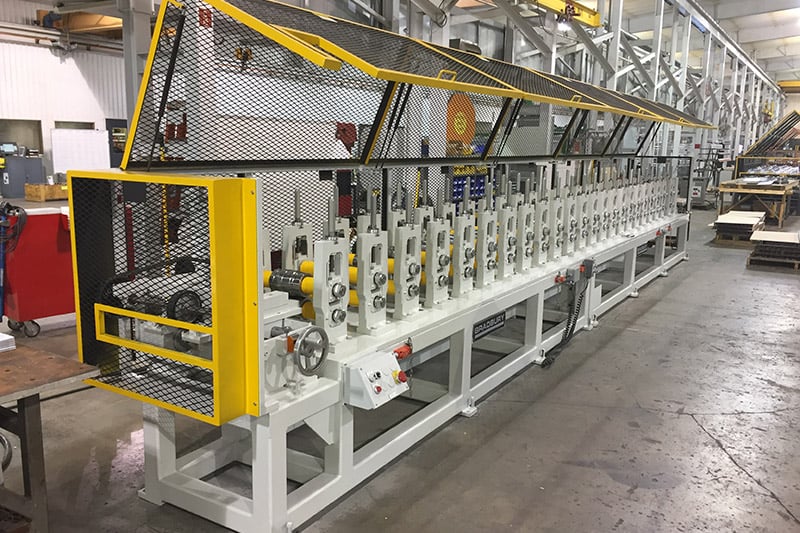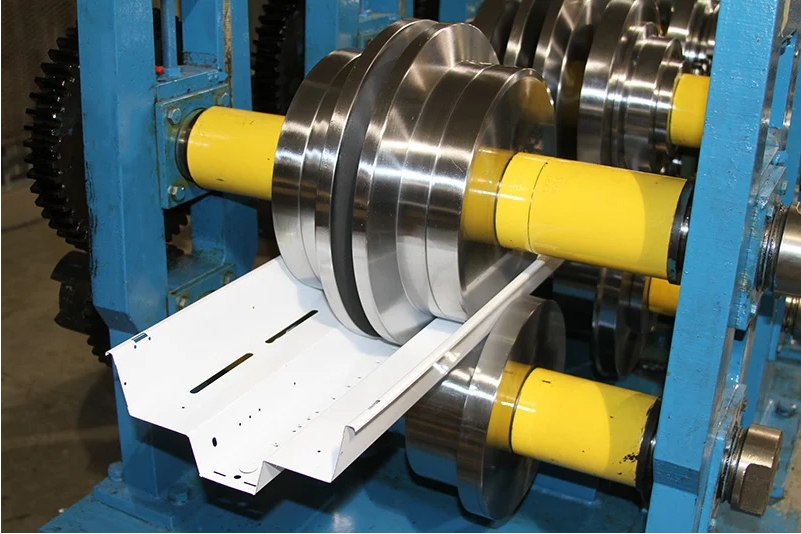Navigation Menu
Contact Us
- Email:
- info@wxavatar.com
- Address:
- Yurong Village, Yuqi Street, Huishan District, Wuxi, China.
Release Date:Jul 11, 2025 Visit:35 Source:Roll Forming Machine Factory
In the competitive world of lighting manufacturing, efficiency is paramount. Every second saved in the assembly process can translate into substantial cost reductions and increased output. One often-overlooked yet highly effective technique for achieving these gains is in-line notching. This process, which integrates the notching of components directly into the manufacturing flow, offers several key advantages that collectively reduce assembly times.

Traditionally, many lighting components, such as metal profiles or plastic extrusions, require notches or cutouts for wiring, fasteners, or interlocking mechanisms. If these notches are created in a separate, off-line operation, it introduces additional handling, potential for errors, and increased lead times. Components must be moved from one station to another, loaded into separate machinery, and then transported back to the main assembly line. This fragmented approach inherently slows down the entire process.
How In-Line Notching Optimizes Workflow
In contrast, in-line notching integrates this crucial step directly into the production line. This can be achieved through various methods, depending on the material and specific requirements. For instance, automated notching tools can be incorporated into extrusion lines for plastic profiles, or into roll-forming machines for metal components. The immediate benefits are clear:
Reduced Material Handling: Components are notched as they are formed or as they move along the assembly line, eliminating the need for separate handling and transportation to a dedicated notching station. This minimizes manual intervention and the risk of damage during transit.
Enhanced Precision and Consistency: When notching is performed in-line, it's often done with greater automation and more precise alignment with subsequent assembly steps. This leads to more accurate and consistent notches, reducing instances of rework or fitment issues during final assembly. Precise notches ensure components fit together seamlessly, accelerating the joining process.
Synchronized Production: In-line notching ensures that notched components are available exactly when and where they are needed on the assembly line. This eliminates bottlenecks that can arise when waiting for batches of pre-notched parts to arrive from an external or separate internal process. The synchronized flow keeps the assembly line moving continuously.
Reduced Work-in-Progress (WIP): By integrating notching, manufacturers can reduce the amount of partially finished goods waiting for the next process. This not only frees up valuable floor space but also simplifies inventory management and improves overall production flow.
Simplified Quality Control: With in-line notching, quality checks can be integrated into the automated process. Any deviations in notch dimensions or placement can be identified and corrected immediately, preventing defective parts from moving further down the assembly line.
Real-World Impact on Assembly Time
Consider a common scenario in LED lighting fixture assembly where wiring needs to pass through various internal compartments. If the necessary wire pass-through notches are created off-line, an assembler might spend time locating the correct component, orienting it, and then struggling to feed wires through misaligned or absent notches. With in-line notching, these openings are precisely where they need to be, making wire routing swift and effortless. Similarly, when joining multiple profiles or housings, perfectly aligned in-line notches facilitate quick and secure interlocking, significantly cutting down on manual adjustment and fitting time.

In conclusion, integrating in-line notching into lighting production is a powerful strategy for improving assembly times. By minimizing handling, enhancing precision, synchronizing production, and reducing WIP, manufacturers can create a more efficient, fluid, and cost-effective assembly operation, ultimately leading to faster time-to-market for their products.